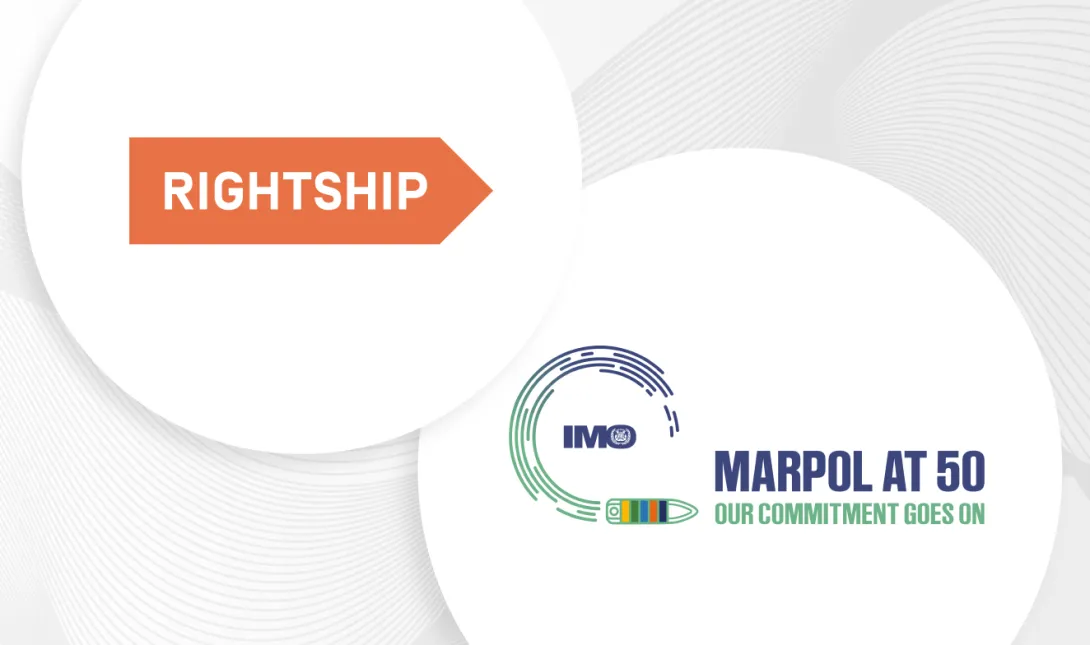MARPOL at 50: What has been achieved so far, and what’s next for pollution regulation?

In the fifty years since MARPOL was formed, the industry has continued to move – sometimes in fits and starts, but always moving – towards a more sustainable future. Regulation has played a big role in major recent developments, including the introduction of EEXI and CII. Substantial progress has also been made through digitalisation in the maritime industry, data collection and analysis, and technological innovation. And it’s clear that data will continue to have a significant role to play in the industry’s future, informing policymakers and other stakeholders.
But where to now? Where can the industry hope to be in the next fifty years, and what will take us there? MARPOL’s work can seem like a drop in the ocean when we look at the extraordinary challenges facing the industry as the global impact of climate change becomes more apparent. But, with 90% of global cargo transported by sea, the importance of protecting our oceans and coasts from oil spills and air and water pollution becomes ever-more vital.
RightShip’s vision is a maritime industry that causes zero harm. How far we have come towards that goal, and how far is there still to go? What are the most effective methods of reducing pollution? How can we regulate and reduce greenhouse gas emissions? What tools are available to us now that weren’t there before?
We asked two of RightShip’s leading experts on the subject to discuss the last 50 years of MARPOL and what the next 50 years will look like.
Hayden Latchford is RightShip's Head of Operations in Asia Pacific. Hayden is a master mariner with over 40 years of maritime experience and has been part of our vetting team for over a decade.
Jon Lane is RightShip’s Senior Sustainability Manager. He works closely with various stakeholders, both internal and external, to provide and develop digital tools that improve environmental performance, with a particular focus on air emissions.
What progress has been made in the last fifty years to help protect marine environments from pollution and harm? And what role have digitalisation and data played?
Hayden Latchford:
The biggest changes have come through legislation. Before 1973, there was no international legislation to prevent pollution, and maritime operational practices were such that pollution was accepted and condoned. So, there have been huge advances in the legislation, and the MARPOL Convention now covers six different areas and forms of pollution. Further gains are now more incremental, and this is where digitalisation and data play a role.
Jon Lane:
Many of MARPOL’s imperatives have made a difference. Emission Control Areas (ECAs) have improved air quality in coastal communities. Initiatives with a specific focus on, for example, oil pollution, sewage, or waste management have had positive impacts. The SOx and NOx regulations have been a success in reducing their target focus impacts (although SOx reductions may result in a net increase in CO2 emissions). More recently, we’ve seen that design imperatives for vessel efficiency have improved the energy intensity of vessels.
We’re also seeing digitalisation and data play more of a role now, with strong data collection allowing the IMO to make more informed decisions on policy.
What is at stake if we don’t take direct action to protect seas from pollution now? What are some of the hidden causes of harm to the seas?
Jon Lane:
The consequences of pollution in our seas are serious.
Air pollution from shipping continues to impact coastal communities, damaging air quality and potentially leading to health issues.
In the sea, pollution impacts flora and fauna. Increased acidification, for example, weakens shellfish, coral, and other calcifiers, disrupting fragile ecosystems, threatening species, and, ultimately, causing damage to human food sources. On a related note, unregulated or careless shipping practices can result in the transfer of invasive species, which, invisibly to our eyes, can destroy natural habitats.
Where are we seeing the maritime industry lack progress? Ship design? Lack of accountability or lack of collaboration? Complex regulations? What are the opportunities to push us forward?
Hayden Latchford:
There are several areas where the maritime industry lacks progress, including ship design, and the main reason for this is a lack of the user-pays principle. All development is laid at the feet of the ship owner, whereas the users of these ships contribute nothing.
Jon Lane:
Until recently, uncertainty about the industry’s direction for 2050 has slowed progress.
Now that we have more clarity, we need increased collaboration and transparent data sharing – this will help to provide further insight and opportunities for collaboration and partnerships.
New short-term efficiency measures can lock in the efficiencies needed to transfer to an alternative low and zero (ALZ) carbon future. The challenge remains the availability and provenance of future fuels and the skills required on a global scale to operate vessels from a human health and environmental point of view.
How can industry bodies strike a balance between growing the maritime industry and protecting the marine environment long-term?
Hayden Latchford:
To strike a balance, there must be carrots as well as sticks, rewards as well as costs. We need a much greater focus on the rewards to encourage sustainable development and compensate for the additional pain.
Jon Lane:
Industry bodies need to send strong signals to provide market confidence for action. Policies need to be robust enough to ensure they are meaningful and impactful for short-, medium-, and long-term measures through 2050. Policies also need to be enforceable on an international scale and allow for a just and equitable transition.
Finally, bodies should facilitate sharing data on carbon emissions (and other environmental impacts) to enable the industry to gain the insights needed to make informed decisions and identify opportunities for improvement and collaboration.